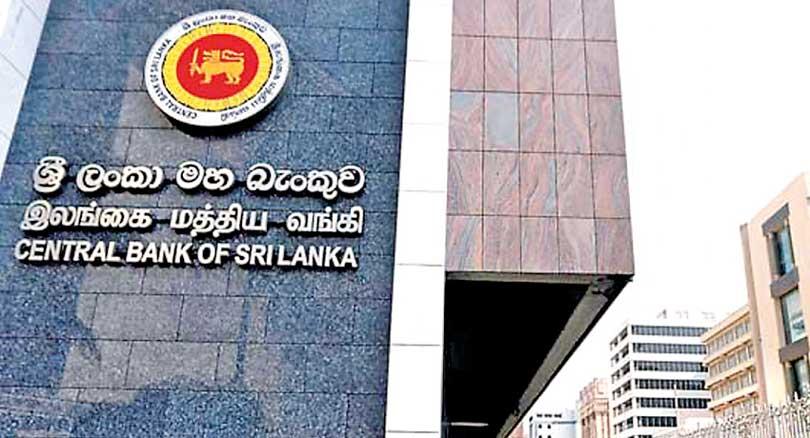Reply To:
Name - Reply Comment

| But in the case of the Treasury bonds, the banks account for around 44 per cent and the superannuation funds for around 37 per cent. In sum, since it is domestic debt that is to be disproportionately cut, the banks, the central bank, and the superannuation funds must bear the brunt of the burden. |
 On July 1, Sri Lanka’s Parliament approved, through a majority 122-62 vote, a plan to restructure the government’s domestic debt, which totalled 15.4 trillion Sri Lankan rupees at the end of March 2023.
On July 1, Sri Lanka’s Parliament approved, through a majority 122-62 vote, a plan to restructure the government’s domestic debt, which totalled 15.4 trillion Sri Lankan rupees at the end of March 2023.
That is not all of Sri Lanka’s public debt, though. At that point in time, of the government’s total debt of $86.5 billion, $46.9 billion was domestic debt denominated in Sri Lankan rupees; external debt in foreign currency amounted to $36.1 billion.
Sri Lanka’s crisis stems from its inability to service external debt, whose interest and amortisation must be paid in foreign exchange. As a result, past profligacy leading to excessive aggregate debt was not the actual problem. The crisis was precipitated by excessive foreign currency debt and a pandemic-induced collapse in foreign exchange receipts from tourism, exports, and remittances, and a spike in the outflow of foreign exchange because of a speculation-driven rise in the prices of fuel and food. As a consequence, foreign reserves shrank, as did the country’s ability to meet foreign debt service commitments.
In response, an illegitimate government and discredited elite turned to the IMF, while presenting that turn as the only “solution” to the crisis. Any real solution required an immediate reduction in the volume of external debt owed, involving substantial losses or haircuts for foreign creditors.
However, the programme that came with the IMF’s $3 billion loan included a commitment on the part of the Sri Lankan government that it would reduce all debt, domestic and external, and not just the external debt that was the source of the crisis.
The obvious difference between domestic and external debt was ignored. While the former can be serviced with domestic currency, which is controlled by the government and the central bank, the latter has to be repaid in foreign currency, which has to be earned through foreign revenues or new foreign borrowing (which the government cannot control).
The IMF’s support was made contingent on major bilateral creditors offering “financing assurances”. But bilateral support alone does not help, since multilateral creditors, like the World Bank and the Asian Development Bank, and private creditors together account for an overwhelming share of the external debt of the government. This confounds the problem.
On the one hand, the multilateral development banks are unwilling to accept any haircut whatsoever as it will lead to a loss of their AAA ratings. On the other hand, private foreign creditors are unwilling to accept losses or haircuts of a magnitude that can make a difference.

The IMF solution does not seek to address these issues. Rather, in the curious turn referred to earlier, it has decided to make all public debt-external and domestic-the source of the crisis. The problem, according to this perspective, is the unsustainable gross financing needs of the government—its overall new borrowing requirement plus debt maturing during the year-in the coming years.
To address that, the IMF’s debt sustainability assessment makes a case for a reduction of the ratio of public debt to GDP from 128 per cent in 2022 to less than 95 per cent by 2031, for which it recommends reducing the gross financing needs figure from 34.6 per cent of the GDP to an annual average of less than 13.6 per cent over the 2027-32 period.
As compared with this 60 per cent reduction in gross financing, the outflow on account of foreign debt servicing is expected to fall from 9.4 per cent of the GDP to 4.5 per cent of the GDP. This is because the haircut required of foreign private creditors is limited to a modest 30 per cent.
In addition, the government is expected to begin issuing new sovereign bonds in about five years from now, suggesting that repayments of reduced foreign debt would be sustained with new foreign borrowing.
Of the Sri Lankan government’s total domestic public debt, around 30 per cent has been mobilised through the issue of short-term Treasury bills and around 60 per cent through Treasury bonds. The central bank holds much of the Treasury bills (62 per cent at the end of 2022), with banks and superannuation funds (like the Employees’ Provident Fund (EPF) and Employees’ Trust Fund (ETF) accounting for 19 per cent and 5.5 per cent respectively.
But in the case of the Treasury bonds, the banks account for around 44 per cent and the superannuation funds for around 37 per cent. In sum, since it is domestic debt that is to be disproportionately cut, the banks, the central bank, and the superannuation funds must bear the brunt of the burden.
However, the banks are in no shape to accept a reduction in the value of their holdings. Non-performing loans on their books have spiked over the period of the crisis, and any further loss would result in insolvency, which would hurt their large depositor base. So, they have been excluded from the restructuring.

Hence, a substantial share of the burden of adjustment must be borne by the superannuation funds, especially the EPF and ETF, which are the repositories of the retirement savings of employees falling in their jurisdiction. The adjustment is to occur largely through a reduction in the interest rate paid on these bonds, from an average of above 20 per cent currently to 12 per cent until 2025 and 9 per cent thereafter until maturity. This is expected to reduce the outgo on interest paid by the government by 0.5 percentage point of the GDP every year.
According to Ahilan Kadirgamar, a Sri Lankan academic and incisive analyst of development policy, the average value of all retirement funds over the last five years stands at 17.7 per cent of the GDP, and with 0.5 percentage point of the GDP loss in value each year, the total value of the retirement funds will decline to 12.5 per cent of the GDP over a decade. That spells a loss of 30 per cent in the value of funds cashed a decade from now.
The inflation that has accompanied the Sri Lankan crisis has already substantially eroded the value of savings of Sri Lanka’s citizens. The imposition of this additional burden is nothing less than administering a dose of shock therapy that hurts those who had in no way contributed to the external debt crisis.
What is more, it is no solution to the crisis. It is merely a way of reducing the losses of foreign creditors who have already earned large profits on the debt they channelled to the Sri Lankan government without due diligence. The entirety of that debt, which markets have been treating as near worthless, needs to be written off.
C.P. Chandrasekhar taught for more than three decades at the Centre for Economic Studies and Planning, Jawaharlal Nehru University, New Delhi. He is currently Senior Research Fellow at the Political Economy Research Institute, University of Massachusetts Amherst, US.